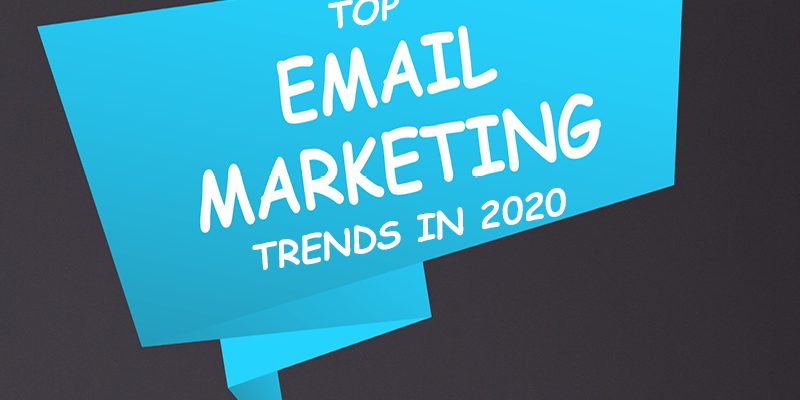Email marketing is still relevant to digital marketing and will be, well into 2020. However, keep in mind that like other online marketing strategies, email marketing is always adapting, changing, and advancing with the technology around it.
According to Marketo, 94 percent of internet users will go online simply to check their email. One of the reasons for its popularity is its appeal to users across many generations, cultures, and social classes. People have used email for many years and will continue to as the digital landscape evolves.
Even with the rise of social media and certain audio/visual channels such as YouTube, email isn’t going anywhere and will be invaluable to any marketing campaign.
The Biggest Email Marketing Trends in 2020
There are several key trends to follow if you want to get the most from your 2020 email marketing campaigns. Whether you’re a B2B or B2C business, it’s important to stay on top of your email marketing strategies to avoid inefficiencies and wasted efforts.
An Emphasis on Interactivity
As more people enjoy interactive media, email marketing will be no exception in 2020. If your email isn’t optimized, most people will likely delete it, making it necessary to optimize for multiple devices including laptops, tablets, and smartphones.
A combination of responsiveness and interactivity will give your campaigns what they need to thrive. While interactivity used to be designed for entertaining recipients, interactivity will entail functionality, encouraging users to engage with your brand and preventing them from simply closing your emails.
People want to be able to effectively engage with your brand through email. Some interactive features in your emails can include:
• Product carousels and interactive images that users can control
• Animated calls-to-action and buttons
• Rollover effects that display product offerings
• Accordion email design features that keep longer emails compact
• User-generated content along with polls, and surveys
User-Generated Content
This type of content can include any kind of text, video, images, or audio that the user creates. You can use this content to help encourage more engagement with your brand among influencers and potential customers. You can always drive the creation of user-generated content by enticing users with incentives. In turn, you’ll benefit from content that adds a touch of authenticity to your emails and can subsequently increase conversion rates.
3dcart, a leading eCommerce company, found that 82 percent of consumers find user-generated company reviews to be extremely valuable and that 70 percent will typically look for ratings or reviews prior to making a buying decision. 3dcart also determined that email users are three times more likely to share content via social media than those who come from another channel, which means that social media shares a kind of symbiotic relationship with email marketing that makes the latter important to utilize as a business.
Today, you can easily get a start on collecting user-generated content by understanding when, why, and how to gather any feedback. Certain tools out there can automate the process.
You can direct users to broad surveys by asking a simple question, but knowing precisely when to request feedback is key. Make sure the user has ample time to experience your products or services before you ask them to comment on the experience. Email marketing software out there can help with this, sending feedback requests at the appropriate times.
The Importance of Accessibility
You can also expect to see accessibility to remain as important as ever in 2020, particularly as voice assistants such as Alexa read emails aloud to users. Millions of smart speakers will be installed all over the world by 2020, which means that email marketers will want to target these devices with readable emails. One of the reasons for the rise in popularity of email readers is the number of people living with impaired vision.
In addition to the challenge of reaching people with vision impairments and other disabilities, marketers need to accommodate for people who have limited connectivity and an overall lack of access to today’s technology.
Thankfully, assistive technology has made it easier for people to connect via email marketing and other channels.
Making Content Accessible
One of the first steps to take is to make sure that your content is accessible. This means keeping emails brief and succinct. Today, people don’t typically have the attention span to read through a long, tiresome email when they can get the same information in a bite-sized format. Ideally, emails should be no more than around 50 words long if you want to hold your readers’ attention.
You can make email content accessible by using shorter sentences, limiting the number of difficult words, and localizing content for worldwide audiences.
Accessibility of Design
You should also make your email designs accessible for your audiences, which entails relying less on all-image templates while utilizing real text HTML. You should also develop a strong visual hierarchy in your emails, avoid long stretches of center-justified text, implement the right font sizes, and make use of contrasting colors for improved readability.
Using Accessible HTML Code
Code is one of the best tools for improving accessibility for all users. This is key to taking advantage of assistive technologies, which depend primarily on HTML. You’ll be able to ensure your email marketing campaigns are accessible with proper code implementation.
First, make sure that all images have alt text descriptions. Next, make sure screen readers can access any HTML tables. You’ll also want to use semantic HTML and be sure to specify a language.
Taking all of these steps to make your email strategy accessible to users will allow you to reach those millions of users you may not be able to market to otherwise.
How Automation is Changing the Game
Over the last 10 years, we’ve seen many changes to email automation, and the next decade will only see more. It’s important these days to integrate email into the rest of your marketing campaigns, and cloud technology makes it easier than ever to automate your processes.
Apart from cloud tech, you can also leverage machine learning and deep learning to superpower your email marketing platforms. Automated segmentation is another advantage that will help improve performance, accessibility, and customizability. Reports are also automated, so you never need to remember to manually create a report.
Ultimately, email marketing in 2020 will allow you to spend more time growing your business and less time managing your campaigns with full automation.
What You Can Expect with Email Marketing in 2020
While it’s impossible to predict exactly how 2020 will go in terms of marketing, as things always change and evolve in directions we might not anticipate, it definitely looks like email marketing will continue to become both easier and more useful as the year progresses. You’ll be able to effectively improve your marketing campaigns and see increased ROI with an email strategy that’s interactive, automated, and accessible, with engaging user-generated content.
If you have any questions, our team would be more than happy to help. Call us today at 215-393-9787.







